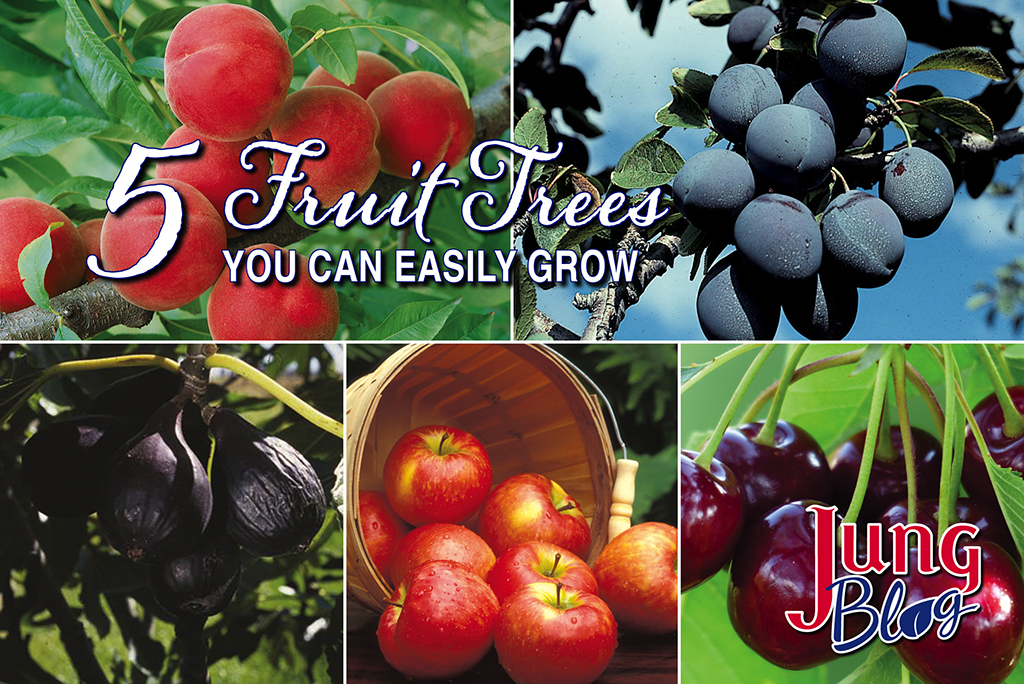
Fresh Produce at Your Fingertips
Isn’t it amazing to wake up to the sweet smell of nature, the rustling of leaves, and the anticipation of biting into a juicy, ripe fruit plucked straight from your own backyard? There’s something magical about plucking a sun-kissed fruit straight from the tree and taking that first, delicious bite. Imagine having that experience right in your own backyard!
In today’s post, we’ll be sharing with you five fruit trees you can plant to transform your backyard into a bountiful oasis. So grab a trowel and put on your gardening gloves. Let’s turn your outdoor space into a fruit lover’s paradise!
Bring Your Garden to Life with These 5 Fruit Trees You Can Easily Grow
Source: Unsplash
As more people embrace sustainable living, self-sufficiency, and homesteading, there’s been a rising interest in growing fruit trees. However, not everyone has the time or expertise to care for a high-maintenance orchard. Luckily, there are low-maintenance fruit trees that can thrive in many climates and require little attention. Here are some examples:
Dwarf Peach Trees
Source: Unsplash
Dwarf peach trees are an excellent option for gardeners with limited space, as they only grow to a height of about 6 to 8 feet. They also produce fruit earlier than most other fruit trees, with some varieties producing fruit as early as May. Dwarf peach trees are self-pollinating, so you won’t need to plant a separate pollinator tree. They also require minimal pruning, making them a low-maintenance option.
Apple Trees
Source: Unsplash
Apples are one of the most popular fruits and for a good reason. They are packed with nutrients and have a long shelf life. Self-pollinating apple trees, such as the Liberty, Honeycrisp, and Red Delicious varieties, produce fruit without the need for cross-pollination. They also require less pruning than traditional apple trees, making them a low-maintenance option.
Fig Trees
Source: Pixabay
Fig trees are another low-maintenance fruit tree option that requires minimal pruning. They are also self-pollinating, so you won’t need to plant multiple trees for cross-pollination. Figs produce fruit twice a year, once in early summer and again in late summer or early fall. They also don’t require much water, making them an excellent option for drier climates.
Cherry Trees
Source: Pexels
Cherry trees are known for their beautiful blossoms and delicious fruit. Self-pollinating cherry trees, such as the Stella and Lapins varieties, produce fruit without the need for cross-pollination. They also require less pruning than traditional cherry trees. Cherry trees can be grown in a variety of climates, but they do require well-draining soil and full sun.
Plum Trees
Source: Pixabay
Plums are a delicious and nutritious fruit, and self-pollinating plum trees, such as the Methley and Stanley varieties, are a low-maintenance option. They produce fruit without the need for cross-pollination and require minimal pruning. Plum trees prefer well-draining soil and full sun, but they can also tolerate some shade.
How to Grow Healthy Fruit Trees
Growing fruit trees in your backyard can be a rewarding and enjoyable hobby. Not only do they provide a source of fresh, delicious fruit, but they can also enhance the beauty of your outdoor space. Here are some tips to help you successfully plant and care for fruit trees in your backyard.
Choose the Right Trees
Before you begin, it’s important to research the types of fruit trees that will thrive in your region. Factors such as climate, soil type, and available sunlight play a crucial role in determining which trees will grow well. Consult with a local nursery or gardening expert to help you choose the best fruit trees for your area.
Prepare the Planting Site
Once you have chosen your fruit trees, it’s time to prepare the planting site. Select a location with well-draining soil and at least 6 to 8 hours of direct sunlight per day. Remove any weeds, grass, or debris from the area, and dig a hole large enough to accommodate the tree’s root system. Add compost or other organic matter to improve the soil’s fertility and drainage.
Plant Your Trees
When you’re ready to plant, gently remove the tree from its container and loosen the root ball. Place the tree in the hole, making sure the top of the root ball is level with the surrounding soil. Fill the hole with soil, gently patting it down to eliminate air pockets. Water the tree thoroughly to help it establish a strong root system.
Provide Proper Care
After planting, it’s essential to care for your fruit trees to ensure healthy growth. Water your trees regularly, especially during the first year, and apply a layer of mulch to help retain moisture and suppress weeds. Prune your trees annually to maintain their shape and promote fruit production. Additionally, fertilize your fruit trees each year with a balanced fertilizer to support growth and fruit development.
Monitor for Pests and Diseases
Keep an eye on your fruit trees for any signs of pests or diseases. Early detection and intervention can prevent significant damage to your trees. Consult with a local gardening expert or extension office for advice on how to manage specific pests and diseases in your area.
Key Takeaways
Growing fruit trees in your backyard can be a fulfilling and enjoyable activity. It’s a way to enjoy fresh, homegrown produce while adding beauty and value to your outdoor space. With a variety of fruit trees available, you can create a diverse and thriving backyard orchard tailored to your personal taste and climate.
Whether you choose apples, peaches, cherries, figs, or plums, these trees offer a delightful combination of visual appeal and scrumptious rewards. Planting and nurturing your very own fruit trees will not only contribute to a sustainable and environmentally friendly lifestyle but also create lasting memories with your family as you enjoy the fruits of your labor.
Other Recommended Reading

- An Easy Guide To Fruit Tree Rootstocks
- Tree Pruning Techniques & Best Practices
- Why Won’t Fruit Grow On My Trees?
- Growing Citrus in Containers
- Top Tips For Fruit Trees: Planting, Caring, & Maintenance
- 4 Popular Wine Grapes For Hobby Vineyards
At Jung Seed Co, we strive to be your go-to guide for all your gardening needs. For more gardening videos, visit our YouTube channel The Garden Doctor by Dick Zondag where he provides gardening tips for all levels of gardeners. When you need reliable gardening advice, turn to the trusted experts at Jung.
If you are in the Wisconsin area, please visit us at one of our Jung Garden Center locations for all your gardening needs. Otherwise, you can browse our website. To receive info on new products, exclusive deals, and specials, be sure to sign up for our weekly email. Join our Facebook page, to discuss all things gardening!
About the Author: This article was written by a guest writer. If you are interested in writing an article for the Jung Blog email us at – info@jungseed.com.